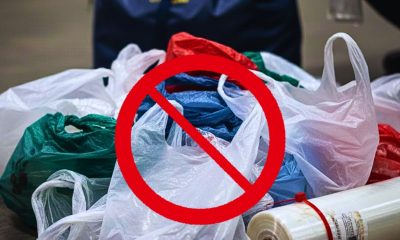Business
USD Shortages Persist: BoM Claims Market Improving Despite $500M Backlog

Despite reassurances from the Bank of Mauritius that the foreign exchange market is on the mend, many businesses are still feeling the pinch. Importers, traders, and authorized currency dealers continue to face a tough reality: getting enough US dollars at fair rates remains an uphill battle, leaving them frustrated and worried about their ability to keep operations running smoothly.
In both formal banking channels and with foreign exchange dealers, foreign currency remains scarce.
When requested, only small amounts are often available, and at rates much higher than official prices. One frustrated importer explained:
“If we ask for $100,000, we might only get $10,000 after waiting a month. This isn’t sustainable for our business. We have to buy dollars elsewhere at higher rates to fulfill our orders.”
Meanwhile, the BoM insists the situation is improving. The latest Monetary Report, released in May 2025, highlighted a significant boost in the foreign exchange market since the start of the year.
Between January and April 2025, the total market turnover reached USD 4.6 billion, up from USD 4 billion during the same period in 2024. Bank and currency exchange bureau purchases increased by 12.1%, totaling USD 2.2 billion, while sales amounted to USD 2.3 billion.
The central bank attributes this positive trend to several factors: stabilization of the rupee, increased foreign reserves, stricter regulation of licensed transactions, and the recent 50 basis point hike in the policy rate in February, which improved the interest rate differential with the dollar. Since January 2025, the rupee has appreciated by 4.9% against the US dollar.
This appreciation is partly due to a weakening of the dollar internationally, influenced by trade uncertainties and U.S. Federal Reserve policies.
President Trump’s push to lower the Fed’s rate by up to three percentage points to reduce US debt costs has caused the dollar to weaken, while the euro has gained nearly 15% against the dollar this year.
However, despite these positive macroeconomic indicators, local businesses report a disconnect between official figures and their daily realities.
The foreign exchange market remains under pressure, with ongoing access issues to US dollars, which are essential for most imports.
Some estimate that the market is operating at less than full capacity, with an accumulated backlog of around USD 500 million.
An expert operating under the pseudonym The Observer points out a technical issue: the central bank maintains a 90 basis point gap between supply and demand — a measure inherited from a more liquid market.
Currently, this spread is considered excessive and distorts market signals, discouraging transactions and complicating access to foreign currency.
Vehicle Imports Surge: A Key Factor Behind Currency Shortages
The central bank acknowledges some short-term market tensions but points to a main cause: a sudden spike in new vehicle imports.
Car dealerships ramped up orders to take advantage of a transitional period before higher customs duties, announced in the 2025-26 Budget presented on June 5 by the government of the Alliance du Changement. This rush resulted in nearly USD 200 million leaving the country in June alone.
Prime Minister and Finance Minister Navin Ramgoolam confirmed during a parliamentary session on 30th July that the government does not plan to extend this transitional period, despite repeated requests from the industry.
He explained that the extra imports have worsened the trade deficit and made foreign currency scarcer on the market. However, Mrinal Teelock, secretary-general of the Motor Vehicles Dealers Association, disputes this.
Teelock claimed these purchases were made before the new taxes were announced and that the sector is being unfairly blamed.
At the Bank of Mauritius (BoM), officials see a different picture. With 85% of annual vehicle sales completed in the first half of the year, they say a structural imbalance has developed in the foreign exchange market.
Meanwhile, some sectors continue to supply foreign currency to the official market. Since January, the hospitality and financial services sectors have collectively brought in an extra USD 171 million in net foreign currency.
About 60% of the foreign exchange sold goes to wholesale and retail trade, including car dealerships.
Another complex factor is currency swaps, which reached USD 3.9 billion in the first four months of 2025, up from USD 2.5 billion during the same period last year.
While swaps offer some flexibility to financial players, they do not meet the immediate cash needs of importers seeking US dollars to pay bills.
Many analysts believe the ongoing currency shortages, despite steady inflows, are partly due to speculation and withholding.
Some market participants, even large ones, may delay selling dollars in anticipation of further depreciation of the rupee.
This behavior artificially worsens shortages, causes sudden spikes in costs, and makes imports more expensive for vulnerable businesses.
Although the BoM has tools to identify such practices, it remains cautious in its public statements.
In a small market like Mauritius, even a slight imbalance between supply and demand can quickly spiral into a crisis.
This situation presents a major test for the new leadership at the BoM. As the central bank aims to modernize monetary policy, regulate currency transactions, and increase transparency, it must turn these goals into real results for businesses.
Market confidence will depend not only on the actual availability of foreign currency but also on clear, consistent monetary policies.
For now, closer dialogue with importers, financial institutions, and tax authorities is crucial to prevent current tensions from turning into a liquidity crisis.
Beyond macroeconomic figures, the daily flow of foreign exchange is vital for the country’s economic health.
Source: l’Express











